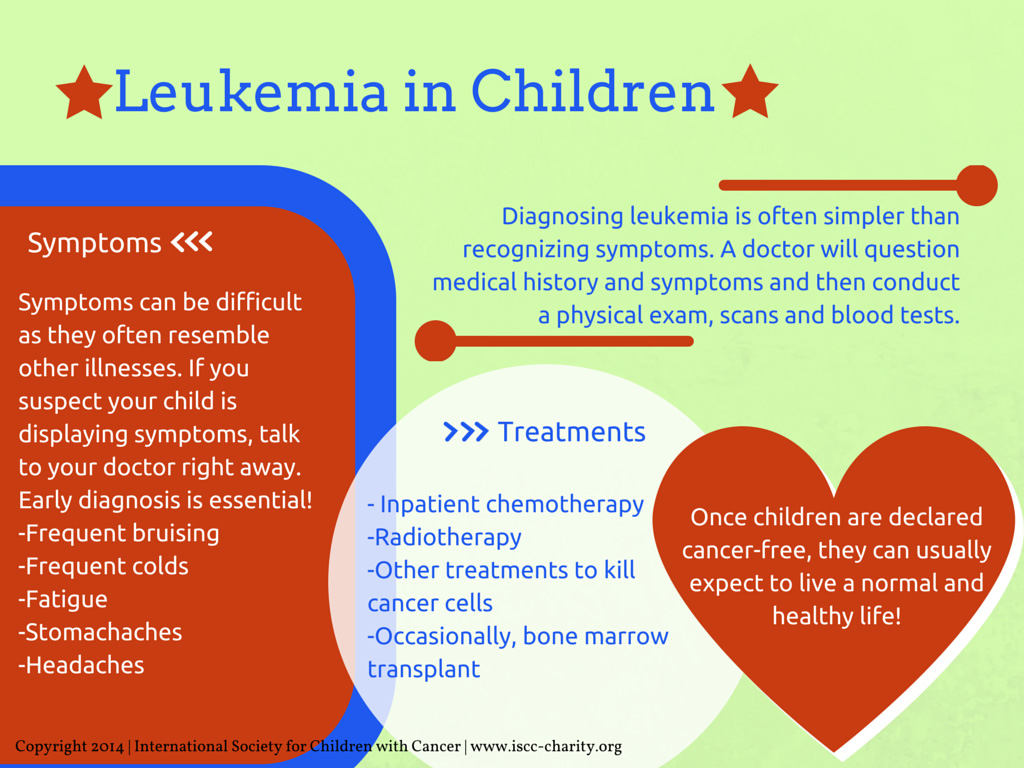Leukemia is one of the most common and debilitating cancers that is found in children. Children who suffer from leukemia have cancer within the marrow of their bones and within the cells that make up the blood. This cancer is especially aggressive and most often affects children who were otherwise healthy. It can be somewhat difficult to treat, but children who receive the proper care and support can often overcome it. Children who have had leukemia can be expected to live a normal life after the cancer.
What are the symptoms of leukemia?
Symptoms of leukemia can be difficult to pinpoint, because they include some common symptoms of other conditions. Frequent bruising is a common symptom, but bruises are also common in children because they are constantly moving and playing. Fatigue, frequent colds, stomachaches, and even headaches can also be symptoms of leukemia in children. If you suspect that your child is displaying symptoms of leukemia, you should talk to your child’s doctor. Quick diagnosis is essential to proper care and treatment.
How is leukemia diagnosed?
Diagnosing leukemia is not as difficult as recognizing the symptoms. When a child is taken to the doctor with suspected signs of leukemia, the doctor will ask questions about the child’s medical history including the symptoms that are present. There will also be a physical exam and blood tests or scans.
How is leukemia treated?
If it is determined that a child has leukemia, the doctor will then work with the parents to start a plan of action for treating the cancer and getting the child back to experiencing a normal childhood. This treatment will often include inpatient chemotherapy, radiotherapy, and other measures that will work to kill the cancer cells. Since these therapies kill the cancer cells, they can also kill healthy cells which may put the child at risk for other illnesses. During these treatments, the child with leukemia may become weaker and may be even more tired than when the cancer was first noticed. Children with leukemia may also need a bone marrow transplant to help the creation of healthy bone marrow cells.
Once leukemia has been successfully treated, the child can be expected to live a normal and healthy life. It may take some time for the child to rebuild strength, but they will often be able to go about normal daily activities as soon as they are declared cancer free. Children who have beaten leukemia only have a very slightly greater risk of getting a different cancer when they are older.


